How Pallet Inverters Solve Safe Transfer of Unstable Loads in Coastal Factories in Greece?
Factories in coastal areas like those in Greece face a constant battle. The salty air and high humidity are relentless. They attack your equipment, your building, and even your pallets. A wooden pallet that looks fine one day can become weak and unreliable the next. When you stack heavy or unstable products on it, you create a serious risk. Every time a forklift moves that load, you are hoping it doesn't collapse. This is a huge, unnecessary gamble. A collapse means lost product, dangerous cleanup, and potential injuries to your people. It's a problem that silently eats away at your profits and your peace of mind. But there is a straightforward engineering solution that takes this gamble off the table.
A pallet inverter is the definitive solution for safely transferring unstable loads in coastal Greek factories. It works by mechanically clamping the entire load, rotating it 180 degrees, and allowing the weak, sea-freight, or damaged pallet to be easily removed from the top. The goods are then transferred to a sturdy, dry, in-house pallet. This automated process completely eliminates the risks associated with manual restacking, prevents product loss from pallet failure, and ensures the safety of workers in a humid, corrosive environment.
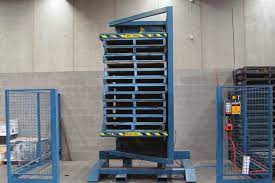
This mechanical solution sounds simple, and it is. That is its strength. In my years as an engineer and later as a factory owner, I learned that the most reliable solutions are often the most direct. You don't need a complex system to solve this problem. You need a robust machine that does one job perfectly. Let's dig deeper into the specific challenges of a coastal environment and see exactly how this machine creates a safer, more efficient operation. This knowledge will help you justify the investment and see the clear return.
What Makes Loads Unstable in a Coastal Factory Environment?
You might think a load is stable when it comes off your production line. But in a coastal factory, the environment itself works against you from the moment the pallet enters your facility. The air is heavy with moisture and salt. This is not a neutral environment for materials like wood and steel. Your pallets are absorbing this moisture, and their metal fasteners are under constant corrosive attack. This means a pallet that was rated for 2,000 kg might fail under a much lighter load. You are dealing with an invisible factor that degrades your load's foundation. The problem is not your product; it's the pallet beneath it. Understanding these specific environmental factors is the first step to creating a truly safe handling process.
Loads become critically unstable in coastal factories because high humidity weakens the wood fibers of pallets, causing them to warp and lose their structural strength. At the same time, the salt in the air aggressively corrodes the metal nails and fasteners holding the pallet together. This dual attack degrades the pallet, making it the weakest link and a primary cause of load collapse during movement or storage.
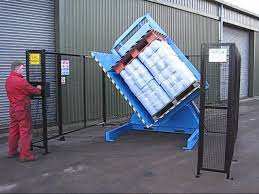
The Hidden Enemy: Humidity's Effect on Wood
Wood is a hygroscopic material. This means it naturally absorbs and releases moisture from the air to reach equilibrium with its environment. In the high-humidity climate of coastal Greece, wooden pallets are constantly absorbing water vapor. This has several negative effects. The wood fibers swell, causing the pallet's dimensions to change. This can lead to warping and twisting, creating an uneven surface for your products. A warped pallet does not provide a stable base.
More importantly, high moisture content drastically reduces the mechanical strength of the wood. The bonds between wood fibers are weakened by water molecules. This lowers the pallet's load-bearing capacity. A pallet designed to hold a certain weight in a dry environment simply cannot hold the same weight safely after sitting in a damp coastal warehouse. The risk of a sudden, catastrophic failure increases dramatically. Think of it like trying to stand on wet cardboard versus dry cardboard. The material itself is compromised.
| Pallet Condition | Moisture Content | Bending Strength | Compression Strength |
|---|---|---|---|
| Kiln-Dried | 12-15% | 100% (Baseline) | 100% (Baseline) |
| Coastal Air (High Humidity) | 20-25% | Reduced by 30-40% | Reduced by 40-50% |
| Visibly Wet | >30% | Reduced by >50% | Reduced by >60% |
The Silent Corroder: Salt's Impact on Fasteners
The nails or staples holding a pallet together are its skeleton. In a coastal area, the airborne salt acts as a powerful electrolyte, dramatically accelerating the process of rust and corrosion. This isn't just a cosmetic issue. As nails corrode, they lose their mass and their gripping power within the wood. The connection between deck boards and stringers becomes loose and unreliable. A forklift's normal dynamic forces—lifting, turning, sudden stops—can be enough to pull these weakened fasteners loose. When the fasteners fail, the pallet literally falls apart under your load. This corrosion affects any metal components, making it a critical consideration for the long-term integrity of every pallet in your facility. You cannot visually inspect every single nail on every pallet. The risk is always there.
How Does a Pallet Inverter Directly Improve Transfer Safety?
Your team moves hundreds or thousands of pallets every day. Every time they lift an unstable load, it is a safety risk. The common alternative, manually restacking goods from one pallet to another, is even worse. It is slow, physically exhausting, and incredibly dangerous. It exposes your workers to repetitive strain injuries from bending and lifting. More acutely, it puts them right in the danger zone if the unstable stack of products topples over. One incident can result in serious injury, regulatory fines, and a loss of trust from your team. You cannot stake your safety record on the quality of a cheap shipping pallet from a supplier. A pallet inverter creates a safe, controlled system that protects your people and your product by removing the most dangerous part of the process.
A pallet inverter directly improves safety by using a mechanized process to secure and handle the load. It clamps the products firmly from the top and bottom, creating a stable "sandwich." The machine then rotates the entire contained load, allowing the unstable pallet to be removed safely. This eliminates the need for manual lifting, prevents ergonomic injuries, and ensures that if a load does shift, it is contained within the machine's steel walls, not on the open factory floor.
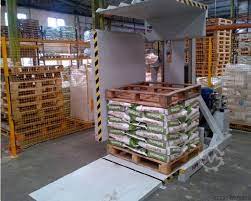
The Mechanical Process: A Step-by-Step Breakdown
Understanding the machine's simple, robust process shows why it is so effective. First, a forklift operator places the entire load, including the unstable pallet, into the inverter's chamber. Second, the operator pushes a button. The machine's hydraulic system gently closes two strong platforms, clamping the load from the top and bottom. The clamping pressure is adjustable, so it can securely hold heavy steel coils or be gentle enough for boxes of delicate goods. Third, the entire chamber smoothly rotates 180 degrees. The original pallet is now on top of the stack, and the goods are resting securely on the machine's platform. Fourth, the operator removes the old, unstable pallet. A new, high-quality in-house pallet is placed on top. Finally, the machine rotates back 180 degrees, and the forklift removes a safe, stable, and secure load. This entire process often takes less than 60 seconds.
| Metric | Manual Restacking (2 Workers) | Pallet Inverter (1 Operator) | Improvement |
|---|---|---|---|
| Time per Pallet | 10-20 minutes | < 1 minute | >90% Faster |
| Labor Required | 2 Workers | 1 Forklift Operator | 50% Labor Reduction |
| Injury Risk | High (Strain, Falling objects) | Extremely Low | Drastically Safer |
| Product Damage Risk | High (Dropping, mishandling) | Minimal | Reduces Waste |
Eliminating Ergonomic Hazards
Manual restacking is a primary cause of workplace injuries in warehouses and factories. Bending and lifting heavy items repeatedly leads to chronic back pain, muscle strains, and other musculoskeletal disorders. These injuries are costly, not just in terms of medical claims but also in lost productivity and lower team morale. A pallet inverter completely removes this physical burden. The operator stays safely in the forklift or at a control panel. The machine does all the heavy work. This is a fundamental improvement in workplace ergonomics and shows your employees that you value their health and safety. It turns a high-risk manual job into a low-risk technical task.
What is the ROI of a Pallet Inverter in a High-Humidity Setting?
As a business owner, I know that any new equipment must justify its cost. You look at a machine like a pallet inverter and see the price tag. But to understand its true value, you must look at the costs you are already paying every day because you don't have one. Think about the value of products lost to collapsed loads. Think about the labor hours your team spends cleaning up spills or manually restacking pallets. Consider the huge potential cost of a single workplace injury. These are the hidden expenses that drain your profitability. A pallet inverter is not an expense; it is an investment that actively stops this financial drain and delivers a clear, measurable Return on Investment (ROI).
The ROI for a pallet inverter in a high-humidity environment like coastal Greece is exceptionally fast, often under 18 months. This return is generated from a combination of hard and soft savings: eliminating costs from product damage, slashing labor hours spent on manual restacking, preventing expensive injury claims, and increasing operational uptime by avoiding cleanup delays. In a setting where pallet failure is a constant threat, the financial case is undeniable.
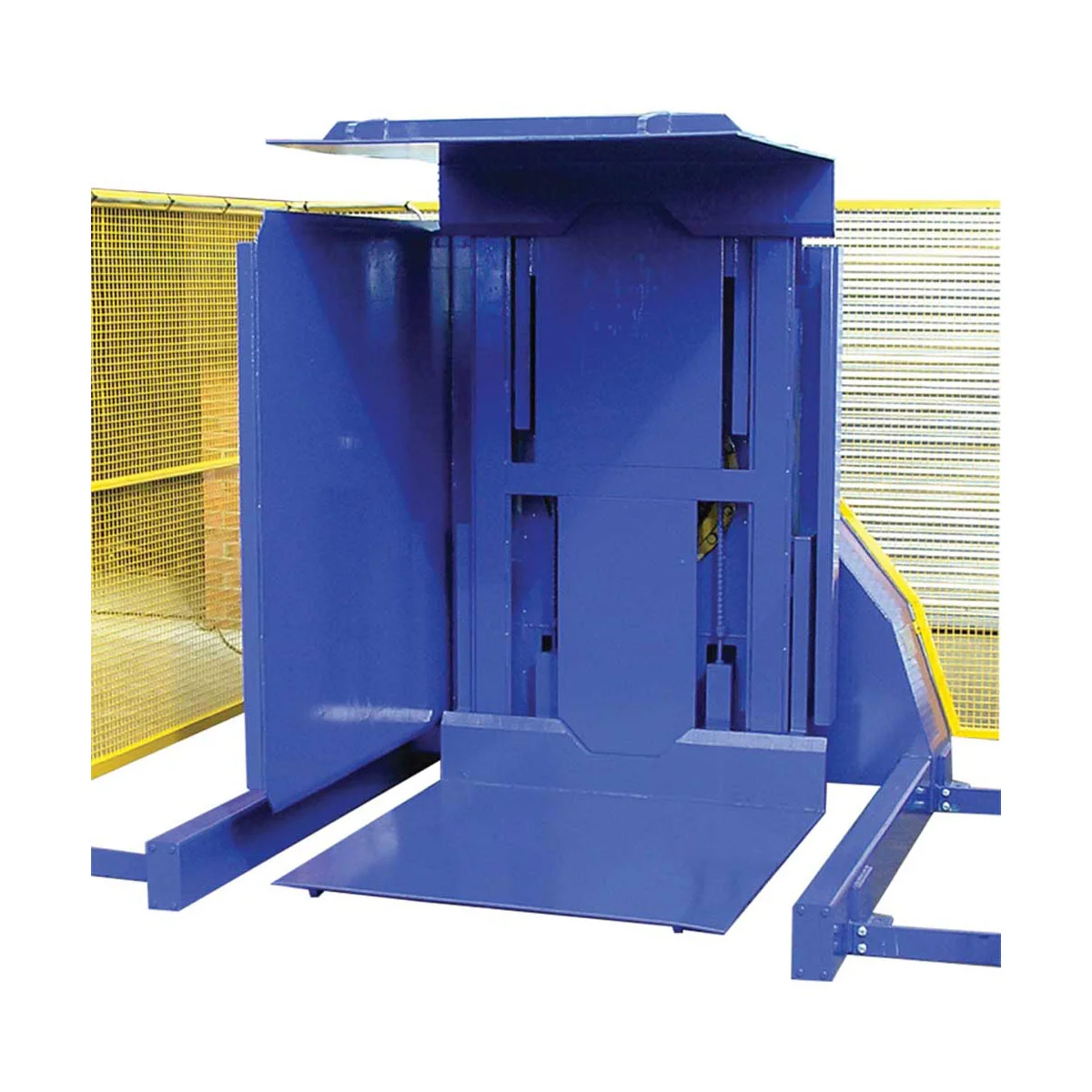
Calculating the Tangible Savings
The ROI calculation is straightforward. You compare your current costs with the costs after implementing the machine. Let's look at a conservative example for a factory handling 50 incoming pallets a day that require transfer.
First, consider product damage. If just 1% of loads have a partial or full collapse due to pallet failure, and the average value of a load is €2,000, the annual cost can be significant. Then, factor in labor. If it takes two workers 15 minutes to manually restack a pallet, that is a huge amount of non-productive time that could be used for value-added tasks. Finally, consider safety. A single serious injury claim can cost tens of thousands of euros.
| Cost Category | Annual Cost (Without Inverter) | Annual Cost (With Inverter) | Annual Savings |
|---|---|---|---|
| Product Damage (Est. 1.5% failure rate) | €30,000 | < €2,000 | €28,000 |
| Labor for Restacking (2 workers, 50 pallets/day) | €45,000 | €0 (reallocated labor) | €45,000 |
| Injury Risk / Insurance Premium | High / Potential for large claim | Low / Potential for lower premium | €5,000+ |
| Downtime & Cleanup (Est. 2 hrs/week) | €8,000 | €0 | €8,000 |
| TOTAL ESTIMATED SAVINGS | €86,000 |
Given that a robust pallet inverter can be purchased for a price in this range, the payback period is often just over one year. After that, the savings go directly to your bottom line.
The Strategic Value Beyond Direct ROI
The numbers on a spreadsheet are compelling, but the strategic value is even greater. An investment in this type of equipment sends a powerful message. It tells your employees you are serious about their safety. It tells your customers you are serious about quality control and protecting their products. It improves your standing with insurers and regulators. Furthermore, a pallet inverter is often a gateway to further automation. It standardizes a key process in your facility, making it easier to integrate with Automated Guided Vehicles (AGVs) or other warehouse management systems in the future. It is a foundational step towards a smarter, safer, and more profitable factory.
How do you choose the right pallet inverter for a coastal operation in Greece?
You are now convinced that a pallet inverter is the right solution for your factory. This is a great step. But now you have another important decision: which machine to choose. Not all pallet inverters are created equal. Buying the wrong machine is a mistake that can cost you for years. A machine that is not built for the corrosive coastal environment will quickly rust and deteriorate. It will become another piece of unreliable equipment that causes downtime. A machine that cannot handle your specific loads or workflow will create bottlenecks instead of solving them. To make a smart investment, you must look past the initial price. You need to evaluate the machine's construction, its technical capabilities, and the support offered by the manufacturer.
To choose the right pallet inverter for a coastal Greek factory, you must prioritize features that combat corrosion. Look for machines with hot-dip galvanized finishes or stainless steel components. Next, ensure the machine's technical specifications, like weight capacity and clamping pressure range, match your specific products. Finally, choose a supplier who understands your industry and can provide reliable long-term service and support, acting as a partner, not just a vendor.
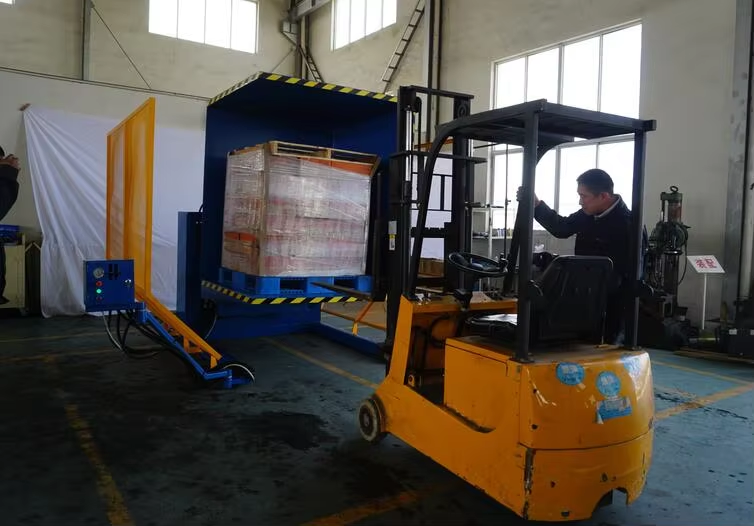
Material and Construction: Your First Line of Defense
In a coastal environment, the machine's material and finish are not optional upgrades; they are essential requirements. Standard painted steel will not last. The salt in the air will find any scratch or imperfection and start to cause rust immediately.
- Standard Paint: Inadequate for a coastal environment. Will fail quickly.
- Epoxy Paint: A better option. It provides a thicker, more durable chemical barrier against moisture and salt.
- Hot-Dip Galvanizing: An excellent choice for most coastal applications. The entire machine frame is dipped in molten zinc, creating a thick, durable, and self-healing protective layer. It is the industry standard for outdoor structural steel for a reason.
- Stainless Steel: The ultimate solution for corrosion resistance, especially in food or pharmaceutical applications. It is also the most expensive option and may be overkill for some general manufacturing environments.
For most Greek coastal factories, a hot-dip galvanized finish provides the best balance of performance and cost.
| Finish Type | Corrosion Resistance | Initial Cost | Long-Term Value |
|---|---|---|---|
| Standard Paint | Low | Low | Poor |
| Epoxy Paint | Medium | Medium | Fair |
| Hot-Dip Galvanized | High | Medium-High | Excellent |
| Stainless Steel | Very High | High | Excellent |
Key Functional Specifications to Match Your Needs
Beyond construction, the machine must fit your operation. You need to answer a few key questions. What is the maximum weight of your heaviest pallet load? What are the dimensions (length, width, height) of your largest load? Are your products fragile and require delicate handling? The answers will guide your choice. Look for a machine with a load capacity at least 25% higher than your heaviest load for a safety margin. Ensure the opening range can accommodate your tallest loads. Most importantly, for unstable or varied loads, adjustable clamping pressure is a non-negotiable feature. It allows you to hold a load of heavy steel parts securely, then reduce the pressure to handle fragile boxes without crushing them. Consider your workflow as well. Do you want to load it with a forklift, or do you need a floor-level model that can be loaded with a simple pallet jack?
Finding a True Partner, Not Just a Supplier
This may be the most important point. When I built my own factory from the ground up, I learned a hard lesson: the cheapest machine is almost never the best value. Downtime is incredibly expensive. A breakdown can cost you far more than you saved on the initial purchase. You need a supplier who understands your operational challenges. You need a partner who can provide technical advice, has spare parts readily available, and offers reliable service. Before you buy, ask about their support network in your region. Ask for references from other customers in similar industries. A good supplier is invested in your success because your success becomes their success. They don't just sell you a machine; they provide a total solution.
My Insights
Javier, I am speaking to you now as one factory owner to another. I have read about your challenges and your goals for your steel mill. The energy costs, the aging equipment, the pressure to improve efficiency—I understand these pressures because I have lived them. I built my own factory from an employee to an owner, and that journey taught me that the smartest investments are the ones that solve multiple problems at once.
The story of pallet inverters in coastal Greece is more than just a case study; it's a perfect example of this principle. You are facing challenges with aging equipment and a goal to reduce operational costs by 8%. A pallet inverter is not just a replacement for a manual process; it's an upgrade that directly tackles these issues. It replaces a high-risk, high-cost manual task with a reliable, low-cost automated one. It cuts waste from damaged products. It eliminates the labor cost of restacking. It prevents the massive financial and human cost of a safety incident. This single machine directly contributes to your goal of lowering operational costs.
You want to improve your capacity utilization to 95%. Every minute of downtime from a spilled load works against that goal. By securing your loads and preventing these incidents, the pallet inverter contributes to operational stability and uptime. You are also driving a digital transformation with MES and IoT. A modern pallet inverter is not an isolated machine; it can be integrated into your system. It can log cycles, provide data, and become a reliable, automated node in your increasingly intelligent factory.
What you are looking for is a strategic partner, not just a supplier. I founded SHJLPACK on this very principle. My mission is not just to sell wrapping and handling machines. It is to share the knowledge I gained building my own success to help other owners like you build theirs. A pallet inverter is a piece of that puzzle. It's a strategic tool to de-risk a critical part of your operation, improve safety, and directly boost your bottom line. Let's talk not just about the machine, but about the total solution for your handling challenges.
Conclusion
For coastal factories, a pallet inverter is not a luxury. It is a critical investment that enhances safety, cuts operational costs, and protects your products, delivering a clear and rapid return.



